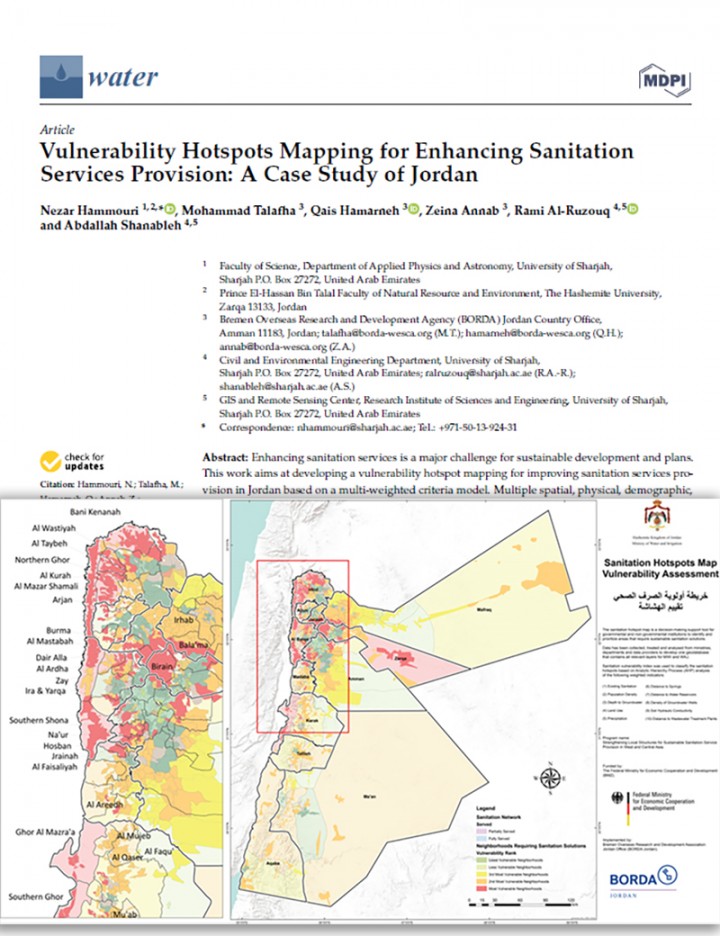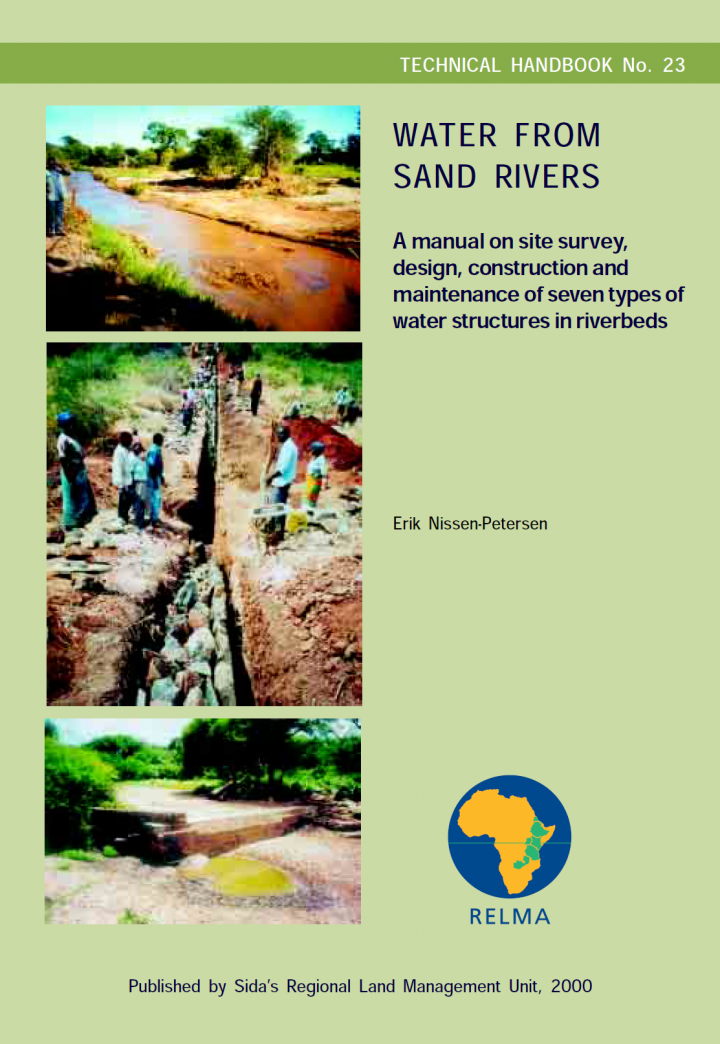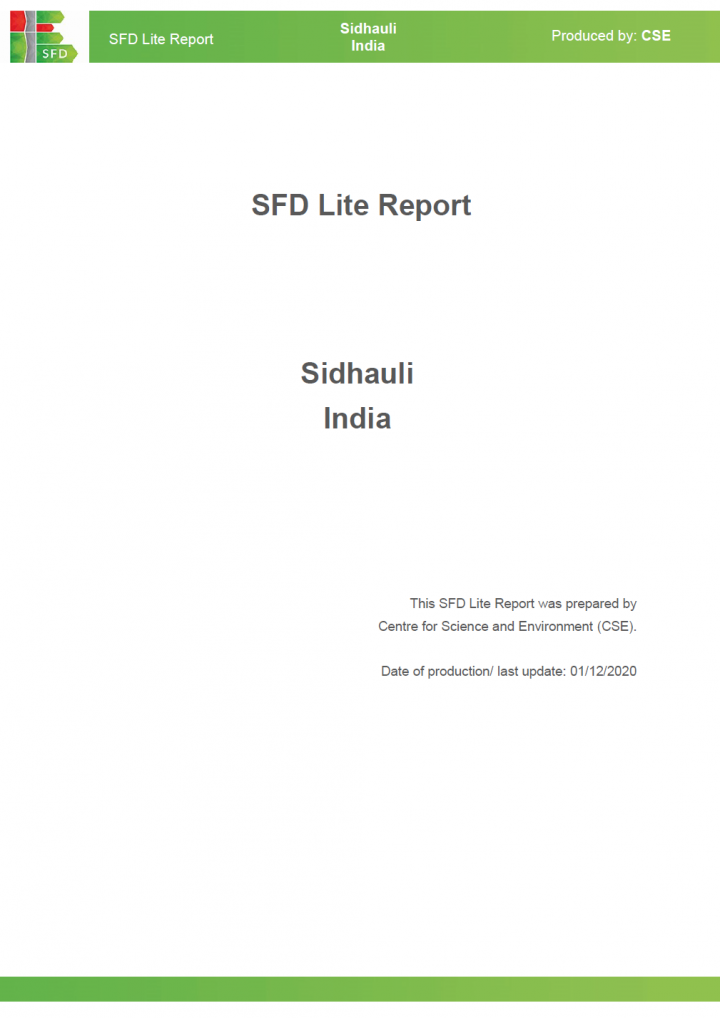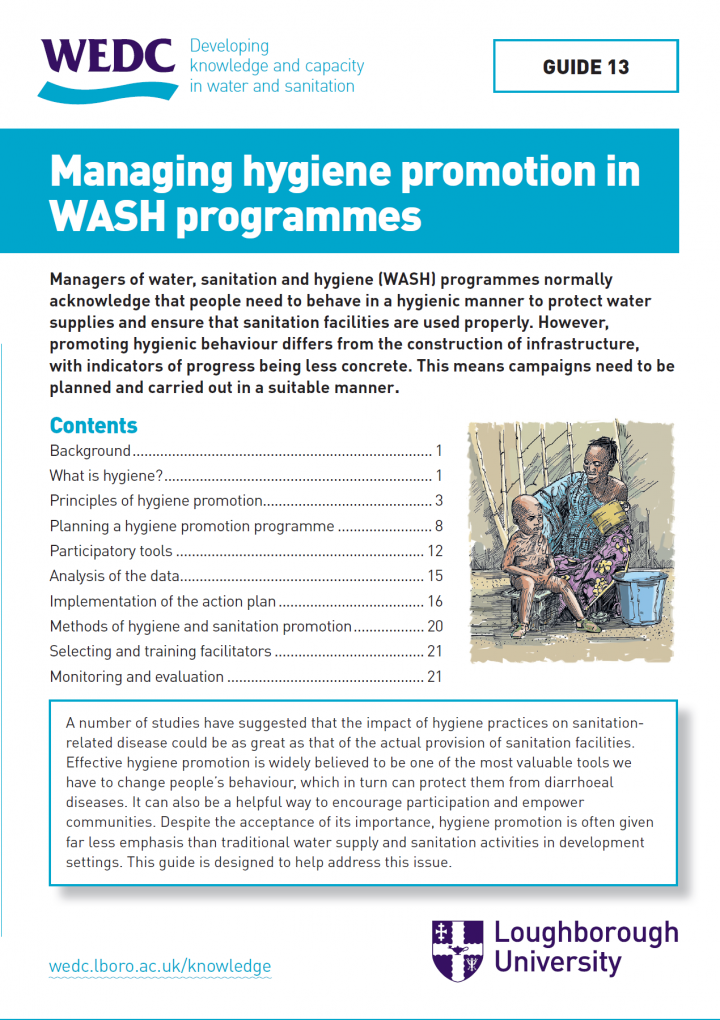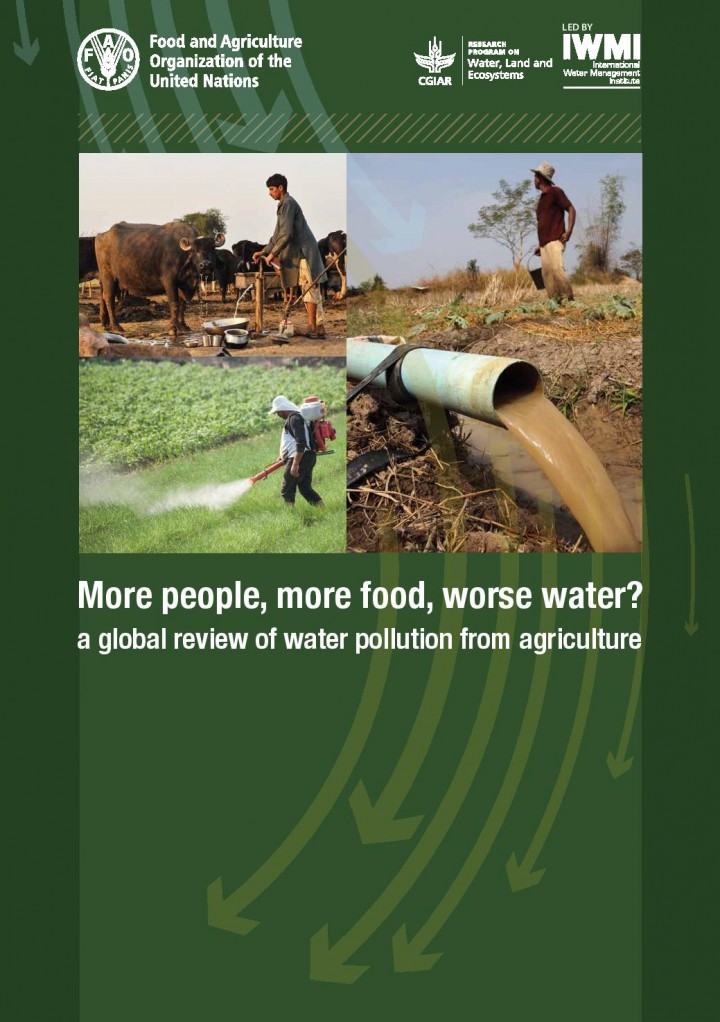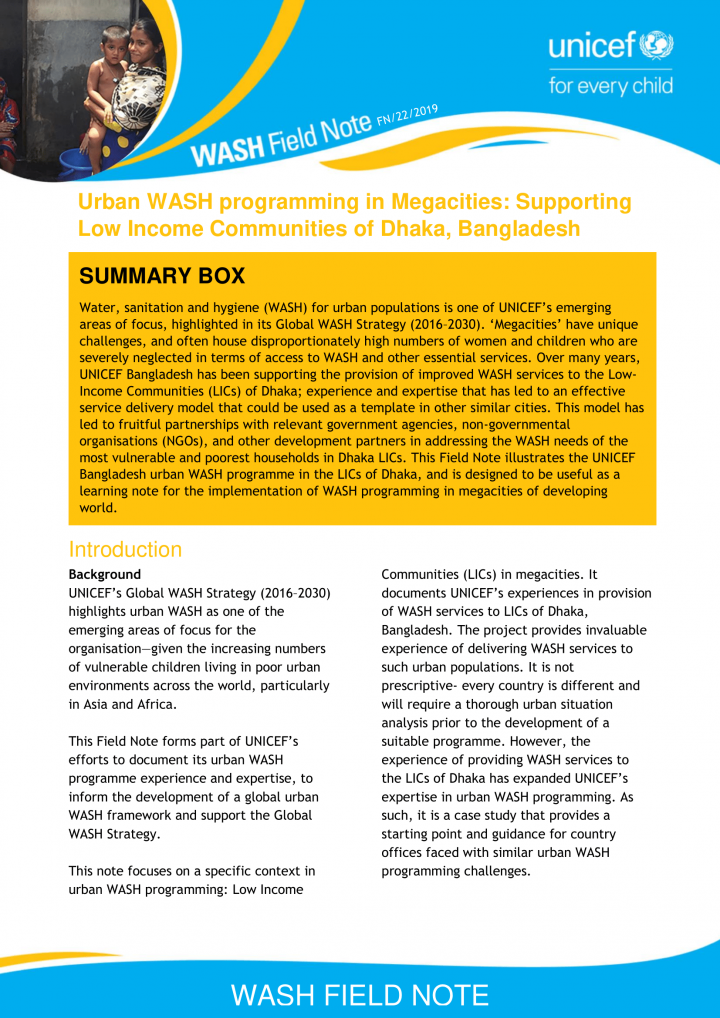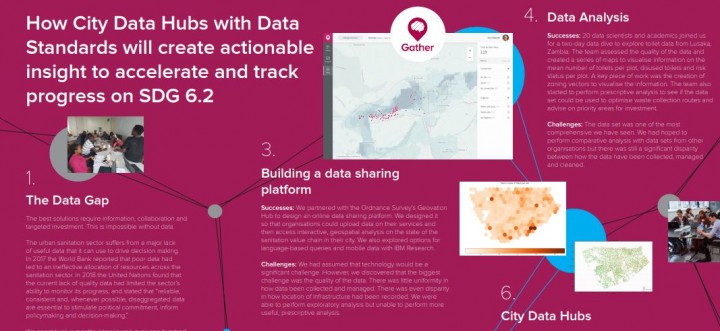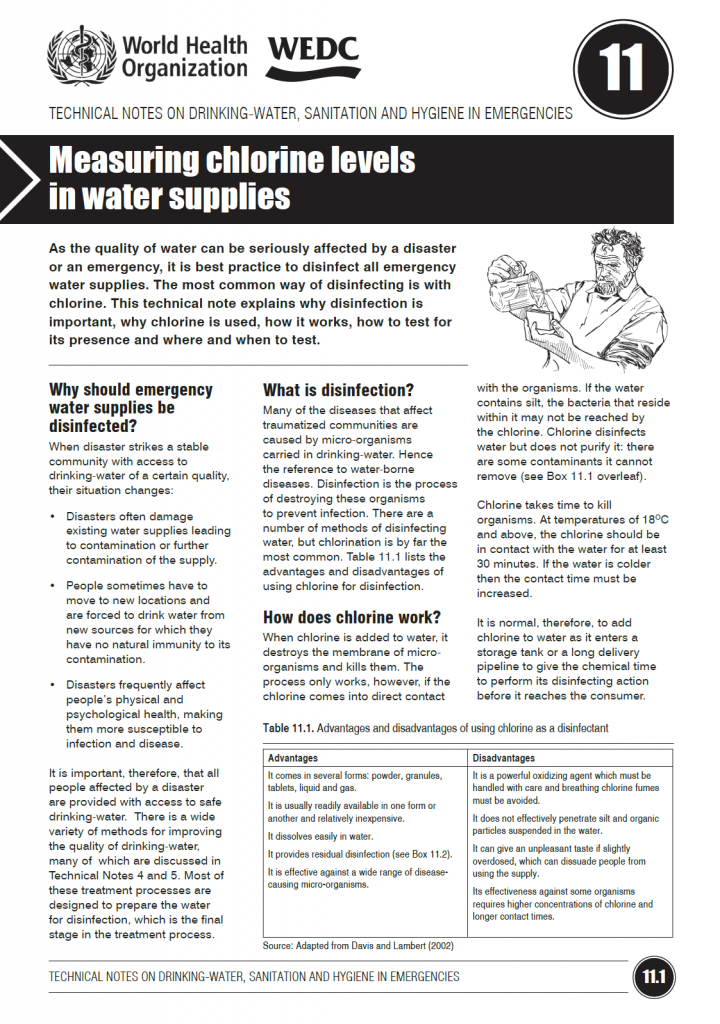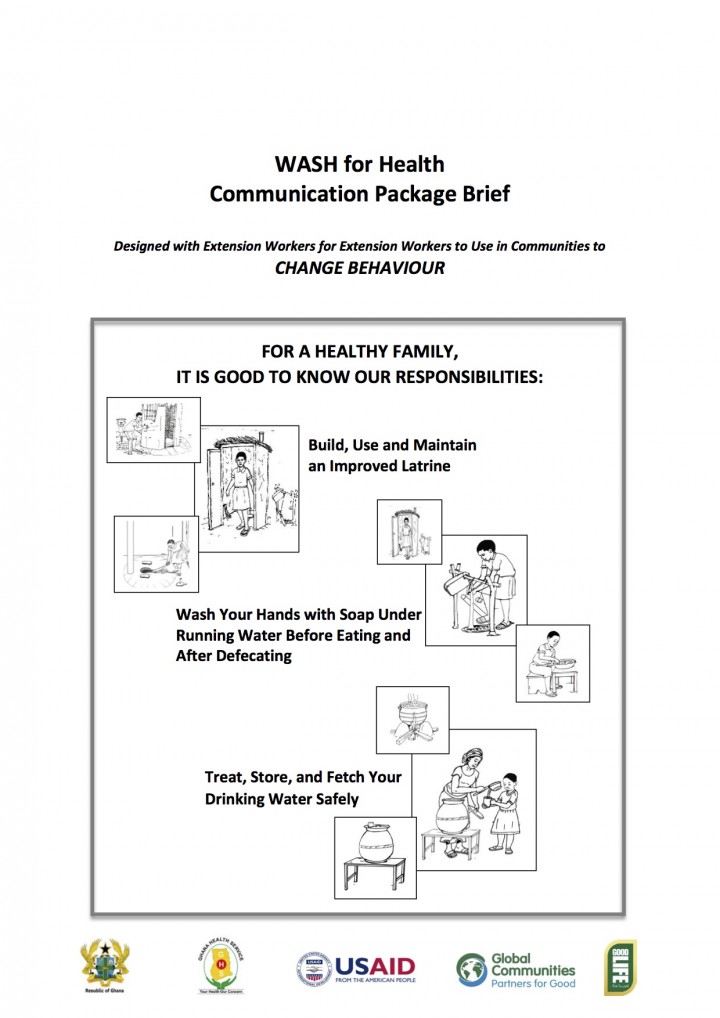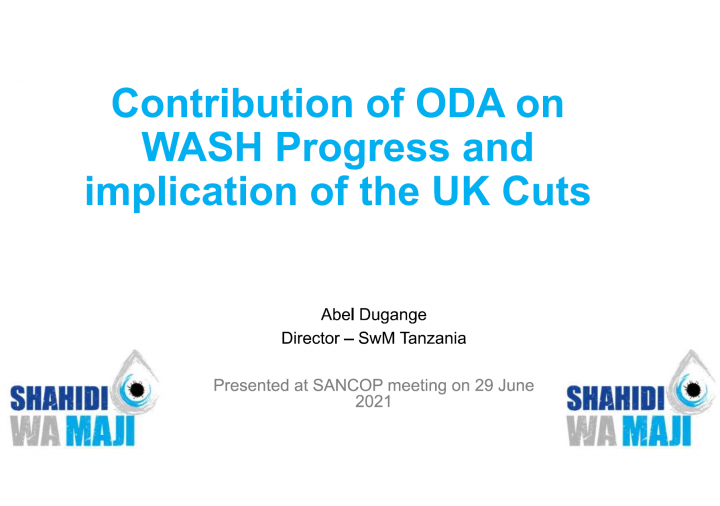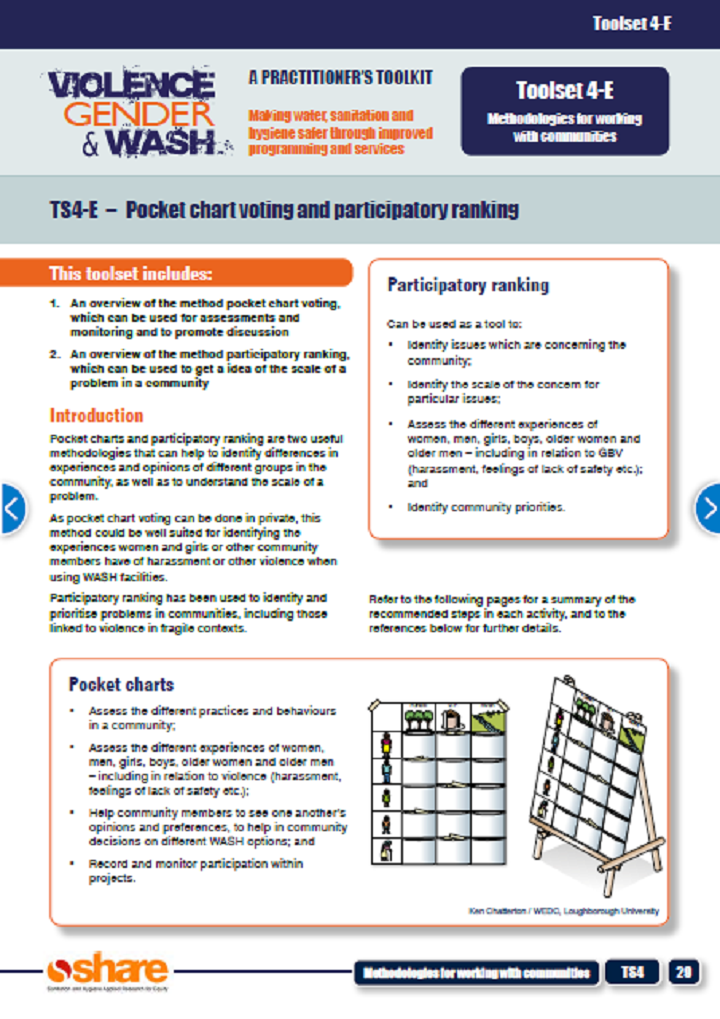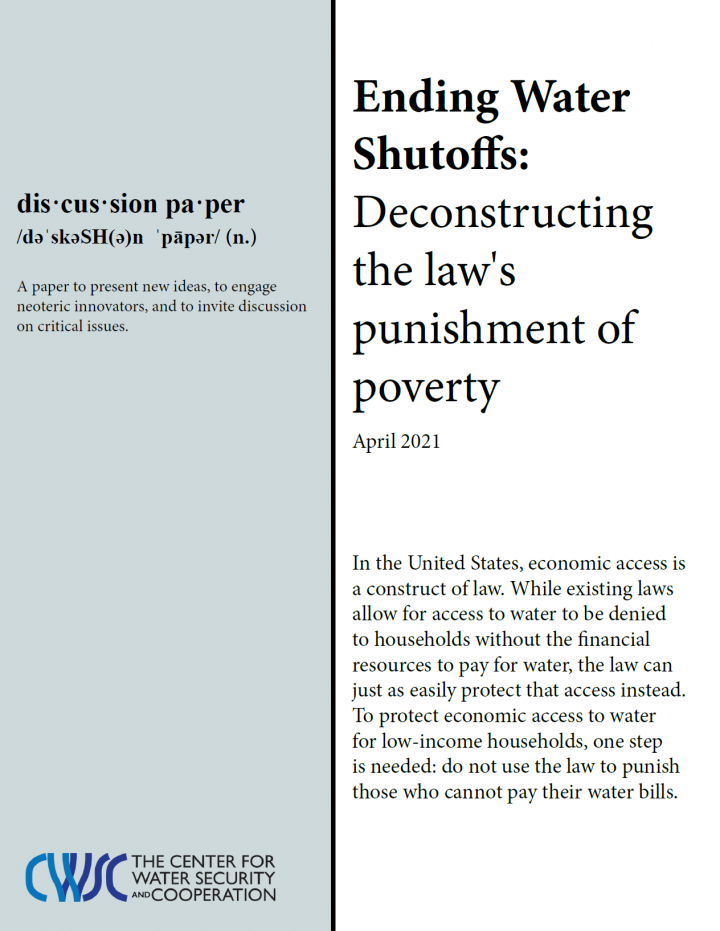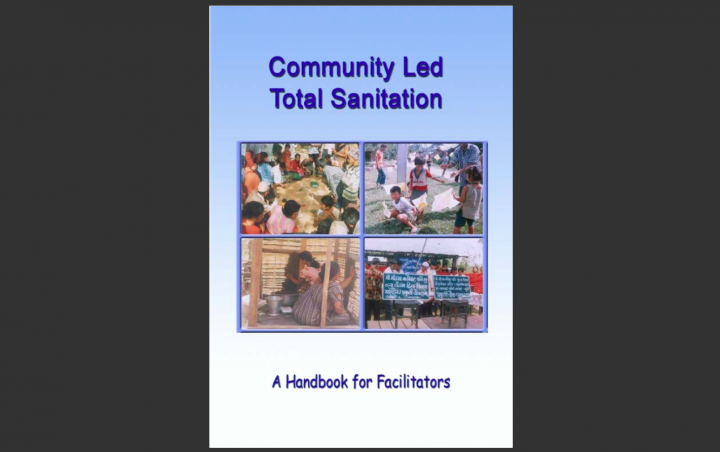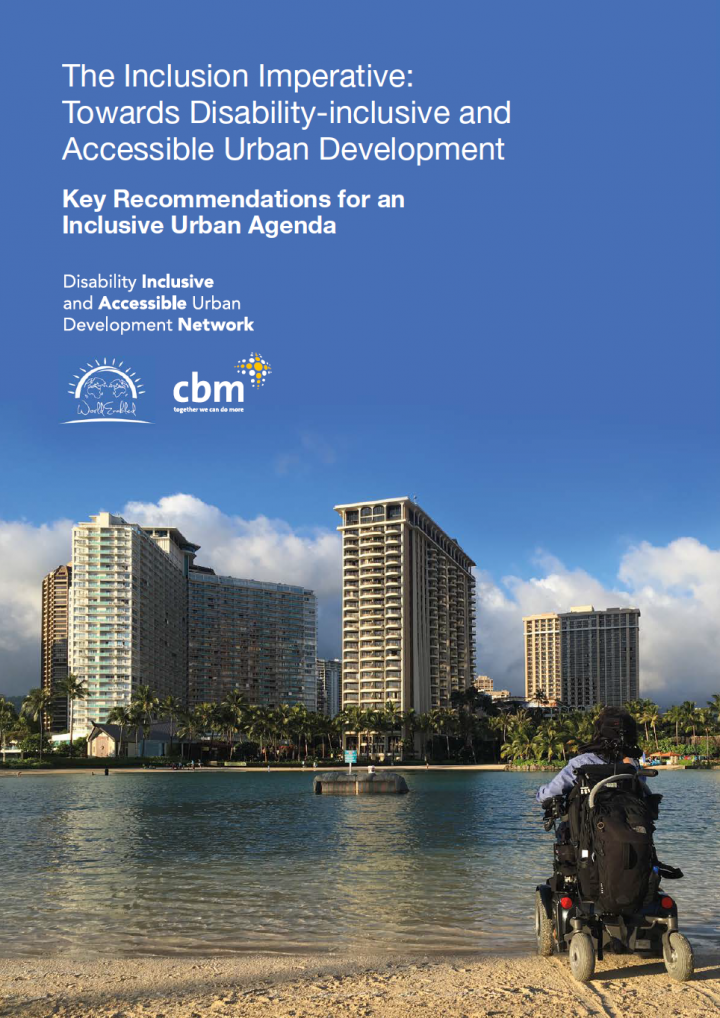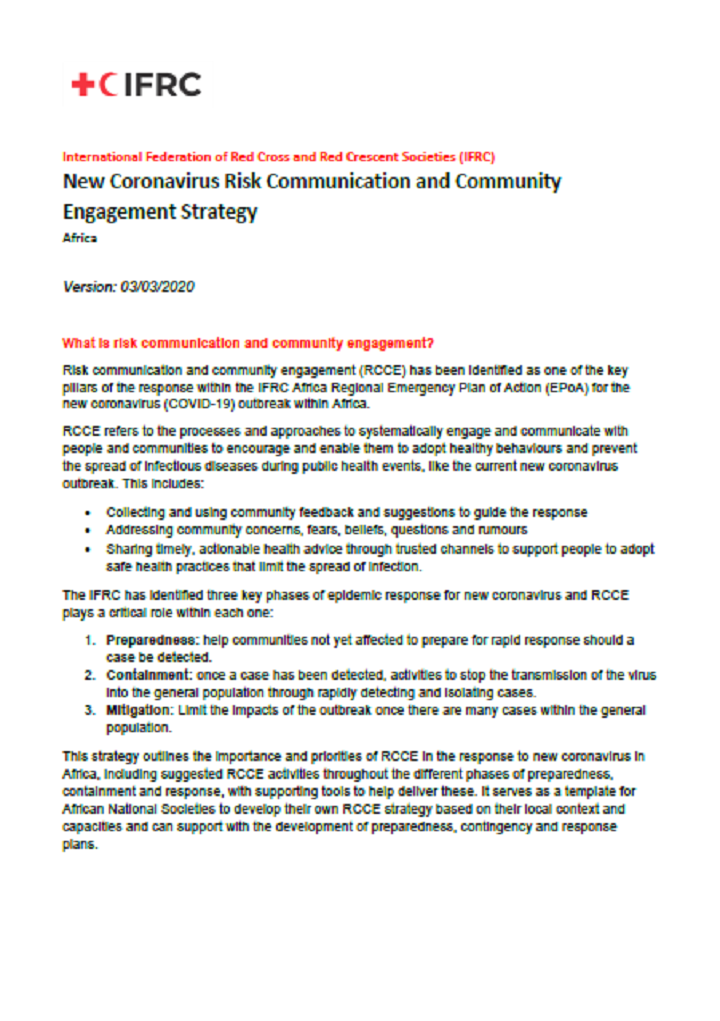Searching for information on Sanitation Workers?
The Sanitation Workers Knowledge + Learning Hub is the best source for all current news, trends, articles and updates on sanitation workers rights around the world.
The “Designing for Behaviour Change” workshop responds to community health managers’ and planners’ need for a practical behavioural framework that aids them in planning their projects strategically for maximum effectiveness. It is built upon the BEHAVE Framework, developed by the Academy for Education Development (AED). The workshop trains participants to apply AED’s BEHAVE Framework to …
Enhancing sanitation services is a major challenge for sustainable development and plans.
This work aims at developing a vulnerability hotspot mapping for improving sanitation services provision
in Jordan based on a multi-weighted criteria model. Multiple spatial, physical, demographic,
social, economic, and sanitation data were collected and compiled using GIS. We also considered
experts’ …
This manual is intended for technicians, builders, trainers, students and development
agencies dealing with site survey, design, construction and maintenance of:
-Hand-dug wells in deep sand,
-River-intakes with shaft in riverbank,
-Intake chambers with elevated water tank,
-Subsurface dams built of soil,
-Subsurface dams built of rubble stone masonry and
-Sand dams built of rubble stone …
The training focuses on developing capacities of all the stakeholders including operators, service providers, Municipal Corporation, elected representatives etc.
This training aims at conveying the key concepts and how to do the operation and maintenance of community toilets and management of feacal sludge in an effective manner, what are the basic non-negotiable elements versus want are the …
Sidhauli is a town and a Nagar Panchayat in Sitapur District in the state of Uttar Pradesh. It is a crowded town situated near Lucknow. The Sidhauli city is divided into 14 wards. The Gomti River flows through the town.
As per Census 2011, Sidhiauli has a population of 24,976 residing in 4,153 households. The population of the city, as per Swachh Survekshan (country wide annual ranking …
Through Community Based Total Sanitation (known in Bahasa as Sanitasi Total Berbasis Masyaralat or STBM), many rural communities in Aceh province in Indonesia have been supported to eliminate Open Defecation (OD). However, achieving Open Defecation Free (ODF) still remains a challenge for many residents. This technical paper presents the results of a study on open defecation practices in rural …
Managers of water, sanitation and hygiene (WASH) programmes normally acknowledge that people need to behave in a hygienic manner to protect water supplies and ensure that sanitation facilities are used properly. However, promoting hygienic behaviour differs from the construction of infrastructure, with indicators of progress being less concrete. This means campaigns need to be planned and carried …
The town of Santa Teresa is located in the extreme southwest of the Nicoya peninsula, in the canton and province of Puntarenas, in the North Pacific Region of Costa Rica. Santa Teresa administratively belongs to the Cóbano district. Santa Teresa is formally only one of the towns of the district.
However, Santa Teresa traditionally comprises the set of towns that extend linearly along the 15 …
14.7% of India’s tribal peoples reside in the Indian state of Madhya Pradesh. Historically these tribal groups have been marginalized, socially and economically restricted, and their access to basic services has been disproportionately lower than that of the wider population. To tackle this inequality and demonstrate how a remote, hard to reach tribal area can benefit from sustained WASH …
We need a much better understanding of the causes and effects of agricultural water pollution as well as effective means to prevent and remedy the problem. In the existing literature, information on water pollution from agriculture is highly dispersed. This repost is a comprehensive review and covers different agricultural sectors (including crops, livestock and aquaculture), and examines the …
Water, sanitation and hygiene (WASH) for urban populations is one of UNICEF’s emerging areas of focus, highlighted in its Global WASH Strategy (2016–2030). ‘Megacities’ have unique challenges, and often house disproportionately high numbers of women and children who are severely neglected in terms of access to WASH and other essential services. Over many years, UNICEF Bangladesh has been …
This section provides some information that may be useful in designing advocacy programmes at national level. It also introduces some of the basics of sanitation and hygiene promotion and lays out the authors’ biases in terms of new approaches to making programmes more effective. Non-specialists are particularly encouraged to read this section. The section sets out to explain why sanitation and …
As the quality of water can be seriously affected by a disaster or an emergency, it is best practice to disinfect all emergency water supplies. The most common way of disinfecting is with chlorine. This technical note explains why disinfection is important, why chlorine is used, how it works, how to test for its presence and where and when to test.
The Water, Sanitation, and Hygiene (WASH) for Health (W4H) Program has put together a comprehensive package of materials for you to use in your communication sessions. These materials have been developed to help you change WASH behaviours in your communities. The following is a list of the types of materials contained in the WASH for Health Communication Package. Materials have been developed for …
Joypurhat is a municipality town and district headquarters of Joypurhat District in the division of Rajshahi, Bangladesh. The city is situated in the northern part of the country, which is 250 km away from the capital city Dhaka. It is beside the Little Jamuna River and the Tulshiganga River and it is well connected with road, water, and railways. It was declared a municipality in 1975. Joypurhat …
Humanitarian aid is largely guided by anecdotes rather than evidence. Currently, the humanitarian system shows significant weaknesses in data collection, analysis and response in all stages of a crisis or emergency. As a result, the present humanitarian system is much less evidence-driven than it should be and than it would like to be.
To ensure that vulnerabilities, needs and access to …
Pocket charts and participatory ranking are two useful methodologies that can help to identify differences in experiences and opinions of different groups in the community, as well as to understand the scale of a problem. As pocket chart voting can be done in private, this method could be well suited for identifying the experiences women and girls or other community members have of harassment or …
The Center for Water Security and Cooperation (CWSC) recently published two discussion papers analyzing access to water and sanitation. One paper sets forth a global definition of "Access" to water and sanitation to chart a path for lasting progress. The second paper makes the case for repealing laws in the United States that allow water to be shut off to low-income households for their inability …
This handbook has been prepared to guide the community health motivators, health and sanitation workers as well as community leaders to adopt and facilitate the CLTS approach in communities where sanitation programmes are being implemented. It is believed that this will help the concerned individuals to get a clear concept of CLTS and guide them to adopt its methods at the community level.
This newsletter will provide you with a set of updates from the GIZ bilateral water and sanitation programmes in Africa, Asia, MENA and Latin America as well as a selection of news from other sustainable sanitation projects worldwide.
This newsletter focuses on scaling-up sanitation.
Urbanization is one of the most important global trends of the 21st century. It has the potential to contribute to the “re-design” of our world supporting the creation of sustainable and inclusive cities for all. About 6.25 billion people, 15% of them with disabilities, are predicted to be living in urban centers by 2050. Urban environments,
infrastructures, facilities, and services, …
The purpose of this risk communication and community engagement guide is to help you run a focus group discussion (FGD) with community members to find out the perceptions, questions, suggestions and rumours within the community about the new coronavirus. It is important the Red Cross and Red Crescent understands what people already know and think about the new coronavirus so we can adapt health …


